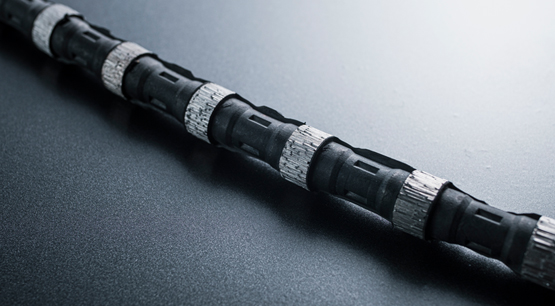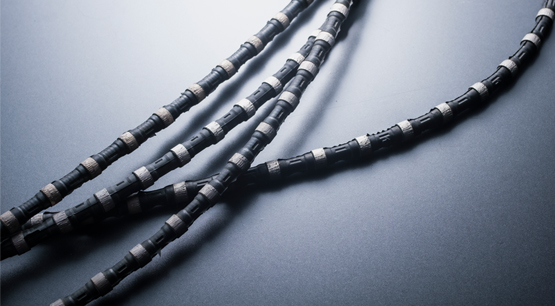The process of diamond wire saw retraction, known as "Finishing," is a critical phase in the entire cutting operation. During this stage, the wire saw faces its maximum bending and high-strength workload, significantly impacting its lifespan and performance quality. To optimize the diamond wire saw retrieval process, here are some recommendations and steps:
1. Preparatory Work
Inspect Wire Saw Condition: Before commencing retrieval, it's essential to inspect the wire saw to ensure it is in good working condition. Check for secure attachment of the diamond wire, absence of looseness, smooth rotation of the wire wheels, and the absence of any jamming.
Site Cleanup: Prepare the worksite by removing obstacles and debris that could hinder the retrieval process, ensuring a safe working environment.
2. Adjust Wire Saw Parameters
Tension Adjustment: To minimize wire saw bending, consider adjusting the tension of the wire. By controlling tension appropriately, you can maintain optimal tension while minimizing bending.
Cutting Speed Adjustment: The cutting speed also affects wire saw bending and lifespan. Excessive cutting speed can lead to accelerated wear and bending, so adjust it according to the specific cutting conditions.
3. Control Retrieval Process
Slow Retrieval: Initiate the retrieval process slowly to avoid sudden force application, which could result in excessive bending. Control the retrieval speed by adjusting the motor's speed.
Maintain Stability: During retrieval, it's crucial to keep the wire saw stable, preventing lateral swaying or vertical fluctuations. This helps reduce bending and wear.
Shutdown Inspection: Periodically halt the retrieval process to inspect the condition and wear of the wire saw, addressing any issues promptly.
4. Maintenance and Care
Regular Diamond Wire Replacement: Over time, the diamond wire experiences wear and loosening. Timely replacement with a new wire ensures optimal cutting performance and extends the wire saw's lifespan. Used wires may still have utility for other purposes.
Cleaning and Lubrication: After retrieval, clean and lubricate the wire saw to remove impurities and dust, preventing adverse effects on the wire wheels and bearings.
Record Usage: Keep records of each wire saw usage session, including time, cutting distance, workload, and other relevant data. This information helps track the wire saw's lifespan and performance trends.
In summary, successful diamond wire saw retrieval involves preparation, parameter adjustments, controlled retrieval processes, and proper maintenance. Implementing these measures can extend the wire saw's lifespan, improve cutting efficiency, and mitigate unnecessary wear and safety hazards resulting from improper operation. Additionally, it's crucial to address any unexpected issues or breakdowns promptly during use to ensure both operational safety and quality.
Furthermore, selecting the appropriate diamond wire saw and related equipment according to specific needs is essential as it directly impacts cutting efficiency and operating costs.








